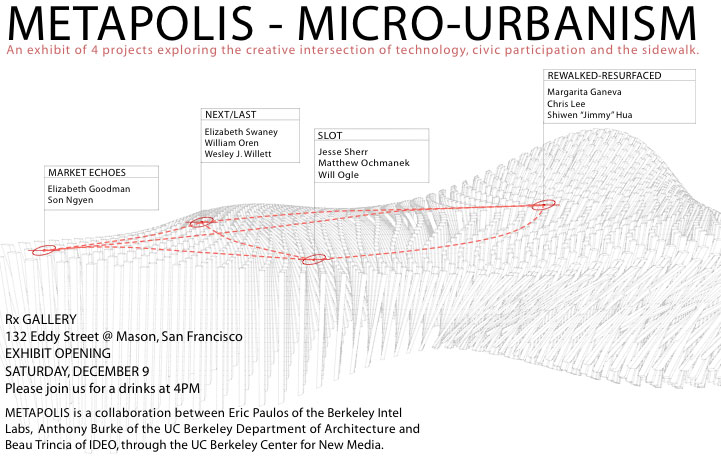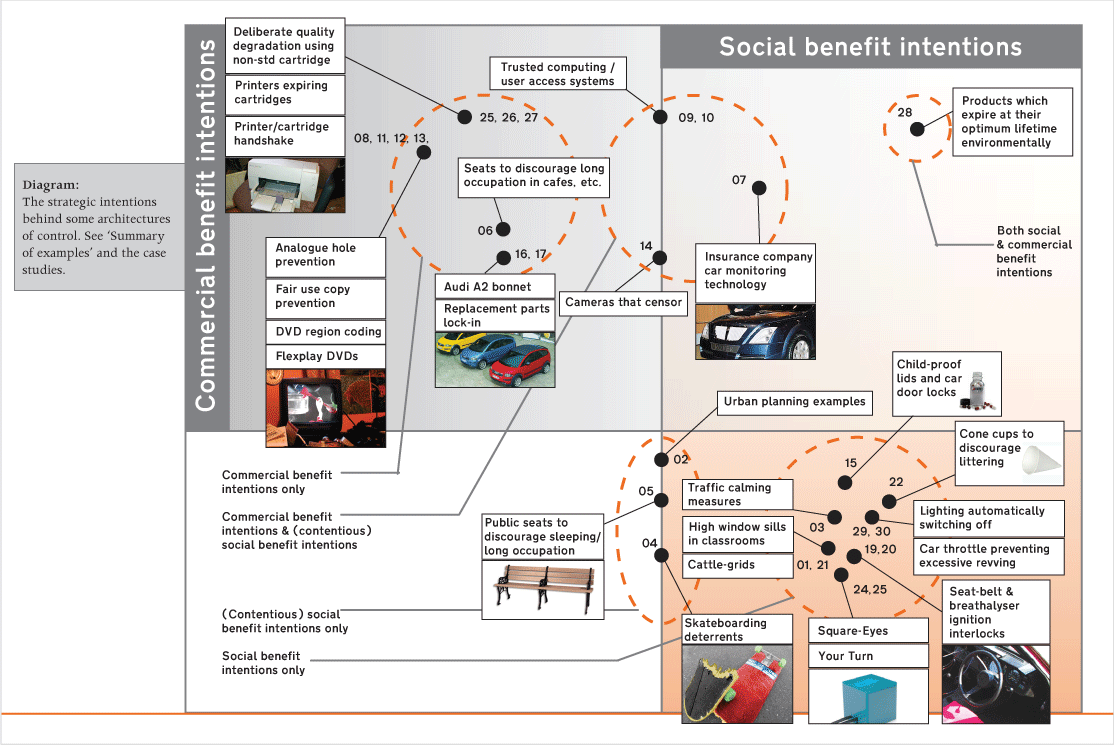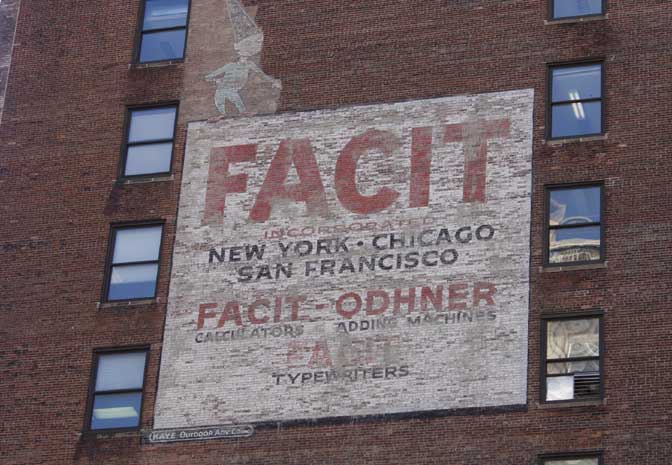Tuesday, December 19, 2006
Thursday, December 07, 2006
Fruit Crate Label Museum

In a continuing effort to expand the contours of urban communication, here is link to an online musuem of fruit crate labels, which were at one time a cutting-edge technology for branding in a particular social context.
"Back in the days of our grandparents and their parents, people did their produce-shopping at markets that were more like a farmer’s market than today’s grocery stores. The fruit and vegetables would be displayed in their shipping crates somewhere near the railroad tracks, probably under a big shed. Each crate would have a label (up to a foot square) showing the name of the packer, and a colorful design to differentiate the brand."
These labels continue to say a lot about typography, iconography, and long-lived cultural narratives of ethnic identity, consumption, freedom, and gender.
Tuesday, December 05, 2006
Metapolis - Micro - Urbanism
Monday, November 27, 2006
Ubiquitous City

As tems like convergence move from buzzword to everyday life, experiments with urban form are expanding in scale. In South Korea, "What started as just a dream has now been transformed to a tangible reality with U-City construction in the pipeline across the country in places such as Unpyong New Town, Songdo, Pangyo and so forth.
U-Cities will be a showcase of the most sophisticated technologies available in the market such as radio frequency identification (RFID) systems, smart cards applications, geographic information systems (GIS), location based systems (LBS), sensor-based computing, wireless communication devices, home networking, digital multimedia broadcasting and video conference technologies, just to name a few."
Sunday, November 26, 2006
Down the D Line
Saturday, November 25, 2006
Sounds of the City
The latest issue of the Chicago Reader ran a little blurb in their free shit section about an audio tour of the Loop. Folks can download an MP3 and listen on an MP3 player while touring the Loop. Another option is to use the interactive map from the comfort of your own home. Of course the Chicago Loop Alliance is only presenting limited sights and sounds that will fit into a boosterist vision of the city but I'm glad to see the city catching up with some of the soundwalk options that are becoming available outside the art world.
For folks who aren't hip to this stuff, Hildegard Westerkamp argues that we focus so heavily on visual culture that we have neglected ou ears; we don't listen closely to the world around us. She has written some interesting articles about the art of the soundwalk. In short, the idea is to move through the city (for the purposes of this blog) and pay attention to the sounds around us. What I like about her work is that she encourages us to layer those sounds (i.e., first listen to sounds that are closer then sounds that are distant, listen to sounds that are quiet then listen to the differences in louder sounds, etc.). So the point is to begin to hear the range of sounds that fill the urban soundscape.
I've got more to say about this general issue but will stop here. Take care.
For folks who aren't hip to this stuff, Hildegard Westerkamp argues that we focus so heavily on visual culture that we have neglected ou ears; we don't listen closely to the world around us. She has written some interesting articles about the art of the soundwalk. In short, the idea is to move through the city (for the purposes of this blog) and pay attention to the sounds around us. What I like about her work is that she encourages us to layer those sounds (i.e., first listen to sounds that are closer then sounds that are distant, listen to sounds that are quiet then listen to the differences in louder sounds, etc.). So the point is to begin to hear the range of sounds that fill the urban soundscape.
I've got more to say about this general issue but will stop here. Take care.
Monday, November 20, 2006
First Ad viewable from Space
 KFC has produced the first ad viewable from space. Will we have to regulate our views from outer space now?
KFC has produced the first ad viewable from space. Will we have to regulate our views from outer space now?According to Michael Castellon:
KFC has the honor to be the first brand to be visible from outer-space, according to company officials. The 87,500 square feet logo was created by tiles placed in the Nevada desert, near the super secret Area 51. The stunt marks the revamp of the KFC logo, which now features a more streamlined image of Colonel Sanders
Thursday, November 16, 2006
Thoughts on San Antonio

The Urban Communications Foundation held a day-long seminar in San Antonio this week. We brought together a number of people to discuss the various aspects of how cities communicate and how they enable people to communicate. The discussion ranged from gentrification, to urban redevelopment, to political organizing, to spatial and environmental design and to technological infrastructure. Even though the group struggled to find a common definition of urban communication, the struggle was a productive one. There was a consensus that real-time, face-to-face interaction is a positive thing. How we achieve that end, and the relative authenticity of that end, is still wide open to debate. Some consider tourist spaces as less than authentic, others find that any instance of "public" is authentic for those experiencing it - regardless of whether or not its wrapped up in consumption. Some consider mediated interactions as necessarily oppositional to face-to-face interactions. Some, including myself, believe that media always serve a pedagogical function, and the rise of social networking technology is increasing the desire for all kinds of interactions (including those in real space).
Walking along San Antonio's RiverWalk, a lot of these issues came up for me. My first thought was that the Riverwalk felt like an exhibit at Disneyland. When I looked into it, I learned why that might be the case. In 1961, Marco Engineering Company of California, who was one of the major designers of Disneyland, was hired to do a report on the commercial potential of the river. They concluded that all the buildings which back up to the river should be developed in an early Texas or Mexican colonial style and provide basement space for easy riverside access. They also suggested that the city hold frequent festivals along the walk. While their plan didn't take off immediately, within several years, it was well under way. Today, we look at what appears to be a fully realized plan.
That the Riverwalk was influenced by the brains behind Disneyland does not, in itself, detract from its ability to function as a thriving public space. But I had this distinct feeling while wandering around the Riverwalk that the city's face had become so beautiful, it was willing to turn away from those who actually live here. In the act of communication, the city stopped communicating. It's true that Riverwalk is the envy of many cities in the country because of its economic success. But it strikes me as an antiquated model and one that cannot be sustainable. It is equivalent to AOL in the late 1990s. By cutting off their network from the wider internet, they believed they could better manage the "public." As it turns out, people were not satisfied with an internet (with a lowercase i), they wanted an Internet. Even while spending 99% of their time in local and definable networks, they wanted to have access to the larger network. Cities are the same way. Localized internets will not work for the sustainability of urban spaces; the local is only as powerful as its ability to extend beyond its boundaries.
Tuesday, November 07, 2006
Polling Place Photo Project

"The Polling Place Photo Project is a nationwide experiment in citizen journalism that seeks to empower citizens to capture, post and share photographs of democracy in action. By documenting their local voting experience on November 7, voters can contribute to an archive of photographs that captures the richness and complexity of voting in America."
Thursday, November 02, 2006
Space, Time, and Containers

A technology as simple as standardizing the size and couplings of a box has utterly transformed global commerce over the past 40 years. Without containerization, it would've been impossible to move American factory production to China and move economic activity from suburban malls to exurban Walmarts.
Will the Blackbox transform urban space again?
Sun CEO Jonathan Schwartz emphasizes efficiency, "Project Blackbox starts from the world's most broadly adopted industry standard, the shipping container, and asks how can we most efficiently create modular, lights-out data centers from this base? The answer? With one-hundredth of the initial cost, one-fifth the cost per square foot, and with 20 percent more power efficiency, we can deliver an immense multiple of capacity and capability, anywhere on earth."
Speed may be even more important. For companies looking to rapdily expand the infrastrucutre for web services, the Blackbox will allow companies to add two petabytes of storage capacity much more quickly that it would take to construct a bricks and mortar data warehouse. Internet speed accelerates again.
CLIFFORD GEERTZ 1926-2006

Clifford Geertz passed away this week. In memory of his work, I'd like to select one quotation that might serve as an inspiration to the work done under the banner of Urban Communication.
"The next necessary thing...is neither the construction of a universal Esperanto-like culture...nor the invention of some vast technology of human management. It is to enlarge the possibility of intelligible discourse between people quite different from one another in interest, outlook, wealth, and power, and yet contained in a world where tumbled as they are into endless connection, it is increasingly difficult to get out of each other's way." From Works and Lives: The Anthropologist as Author (1988)
Virtual Transforms Real?

This USA Today article is helpful because it continues to erase the line between the physical world and the virtual world. New communication technologies alter our focus of attention, allowing us to take for granted that we, as individuals, can carefully craft how we connect with others.
When communication patterns are altered so fundamentally, it is inevitable that social norms and attitudes will also be fundamentally transformed.
Monday, October 30, 2006
42nd Street Makeover
Urban planners are pushing to transform 42nd Street into a pedestrian mall, complete with its own street-level rail line.
The transformation, which advocates say would turn the clogged streets into a narrower version of an Italian piazza, would boost business on the strip by up to $500 million a year while cutting crosstown travel time in half.
The transformation, which advocates say would turn the clogged streets into a narrower version of an Italian piazza, would boost business on the strip by up to $500 million a year while cutting crosstown travel time in half.
Wednesday, October 18, 2006
Color is a Communication Tool

The connection between urban space and communication occurs on many levels. Industrial designer Ruth Lande Shuman founded Publicor, which has the following mission:
Publicolor is a not-for-profit organization incorporated in 1996. Our mission is to catalyze change in inner-city schools and neighborhood facilities though the power of color and collaboration. We not only transform the space but the people who use them as well. We do this through our Paint Club and COLOR Club programs which train at-risk students the marketable skill of commercial painting.
We transform public spaces in neglected schools and neighborhood facilities through the powers of vibrant color and organized collaboration. Our thoughtful designs with color create visual order in often chaotic spaces energizing the people and bringing a sense of calm through this visual landscape.
Thursday, October 12, 2006
Surveillance Cameras on Every Block

Mayor Daley is willing to bet that by 2016 Chicago will have a surveillance camera on every block in the city. This technology transforms expectations of trust, power, and the social uses of space. Late night bars, clubs, and convenience stores might be required to adopt systems that can identiy individuals. Cities have always been formed of contested spaces where some people are welcomed and others are shut out. Digital traces transform this contest of inclusion and exclusion, improving the comfort and security for some residents, diminishing the vitality and energy of other areas.
Wednesday, October 04, 2006
Interactive Social Asset Mapping

I'm originally from the Calumet Region, which stretches along the shoreline of Lake Michigan from the southside of Chicago to Michigan City, Indiana. The region has the greatest concentration of natural diversity in the United States, and some of the worst pollution. It has produced great economic wealth, but also suffers a high level of poverty. These contradictions can help to be reconciled with the right kind of communication resources. The Field Museum in Chicago helped to coordinate an innovative, participatory research program that combined the efforts of community residents, academics, and GIS and visual ethnography to create a social asset map of the region.
Saturday, September 30, 2006
Concertino for Cellular Phones and Orchestra

Composer John Cage developed a large-scale, participative music project for Chicago at Laszlo Moholy-Nagy's School of Design in the 1930s with a vision for the technological future of music.
Now U.S. jazz composer David Baker is encouraging people to use their phones during the debut performance of "Concertino for Cellular Phones and Orchestra" that will open the 20th anniversary season of the Chicago Sinfonietta classical music festival next month.
Parks, Memory and Time
Thursday, September 28, 2006
Smells of the City

As Google Map mashups go, this is a great one. I could see putting this on my cell phone and cross referencing as I navigate the city's stench.
Who Cares about parks these days?

What is the future of public space in America's cities? This article picks five exemplary projects and aims to answer that very daunting question.
Thursday, September 21, 2006
EPIC 2006

As new information technologies move out of labs, corporate settings, and classrooms and ever more deeply into the everyday experience of people, the study of this phenomenon grows in importance to audiences outside the academic community. EPIC is one setting where bridges across academic/aesthetic/corporate chasms are being built. Urban communication scholars ought to have a voice in this process.
Guangshen Highway

For years, the Doors of Perception Conference has offered innovative ways of thinking about technology, design, and urban form. In this presentation (in a large pdf file) Gutierrez + Portefaix grapple with the challengees of understanding the urban from emerging from the very rapid expansion of infrastructure on a massive scale in the Pearl River Delta.
Is LA more dense than New York?

This is an argument against Robert Bruegmann's recent report, "LA the King of Sprawl, Not at All."
Traffic congestion and overcrowding are daily reminders that a lot of people live in Los Angeles. This allows the claim that the city of Los Angeles is more dense than New York City to fall on willing ears. There’s only one problem. The city of Los Angeles is NOT more dense than New York City. A recent study by UCLA urban planning students Sandra O’Flaherty, Andrea Osgood, and Lara Regus sheds some light on the facts and how confusion arises from various definitions of density.
Wednesday, September 20, 2006
Waymarkr
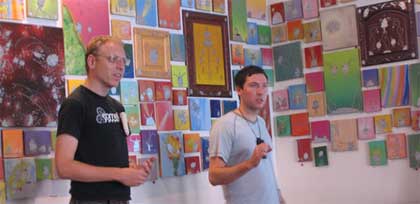
New technologies allow individuals the ability to easily capture, upload, and annotate everyday life to an unimagined degree. And the r at the end means it's full of web 2.0 goodness.
WayMark gives users an alternative perspective on their daily interactions by documenting continuously and effortlessly their life. All you have to do is install the Waymarkr software on your Internet enabled Series 60 mobile phone. Once the software is enabled, your phone will continously take photographs of your events and perspectives. All photographs are sent to a remote server so your phone never runs out of space. You can then login to the Waymarkr web site, annotate and share your photos, see stop motion movies of your captured event and map out where your images were taken. You can also see other user's photos that were taken at the same time and place as yours.
The New York Society for Acoustic Ecology

AudioBus B61 considers the route of the 61 bus as a computer-based sound and landscape image loop with fluidly shifting audience and live performance elements. It is designed to simultaneously collect and broadcast information associated with the experience of public transportation.
It is just one of many projects relevant to urban communication presented at Conflux in Brooklyn.
$1500 Grocery Carts
Thursday, September 14, 2006
Totems: The Communal Spirit of Black Murals
Amen Break
Architectures of Control
In Memorial: Bill Stumpf

The aeron chair gives material form to the intersection of the creative urban class and the dot com boom of the virtual world. The chair, among many other objects was designed by Bill Stumpf who passed away on August 30, 2006. Bill Stumpf helped transform the field of design through an emphasis on research-based creativity, in the service of adding more beautiful things to advance the arts of daily living.
Thursday, September 07, 2006
Millennium Park

The single most powerful icon of urban communication in my mind is Chicago's Millennium Park. Timothy Gilfoyle has written a marvelous history of all of the elements that went into the creation of this special urban space: the legislation that provided an open lakefront, the rise of the railroad infrastructure that brought economic wealth and cultural clout to Chicago and the subsequent decline that left a ghostly space in the heart of the city, the public private investments needed to fund the park, the impact of globalization on local corporate philanthropy, and the aesthetic vision that informed contemporary sculpture suitable to the scale of the park.
If we are lucky, in five years a scholar will write a book documenting the use of this park as a site of urban communication, which varies in scale from crowds of hundreds of thousands that come together to mark civic holidays to single individuals contemplating the water garden, and range from the high culture of a restored black and white print of Sergei Eisenstein's 1925 classic Battleship Potemkin backed by a symphony orchestra to the simple joy of a Chicago style hotdog.

Logic + Emotion
Urban communication intersects with a host of specialized knowledge communities. Web content developers, interactive marketing companies, and interactive experience designers play an increasingly important role in reshaping the communication spaces we inhabit. Logic + Emotion, a blog created by David Armano, provides an interesting window into this process which
exists at the intersection of Marketing 2.0, Brand Engagement and Experience Design—where passive consumers are transformed into active participants."
Cyberbia
One of the great joys of urban communication occurs when abstract theories grapple with the complexities of city life. Cyberbia is a web site for the urban planning community, and one forum there is dedicated to representations of urban life. The thread in the link above is a brief essay accompanied by dozens of photographs of Hong Kong. Images numerous enough to dramatize the deep differences in scale, notions of public and private, and density of commercial images that are encountered in most typical American cities which too often serve as a template for our analysis.
Dubai
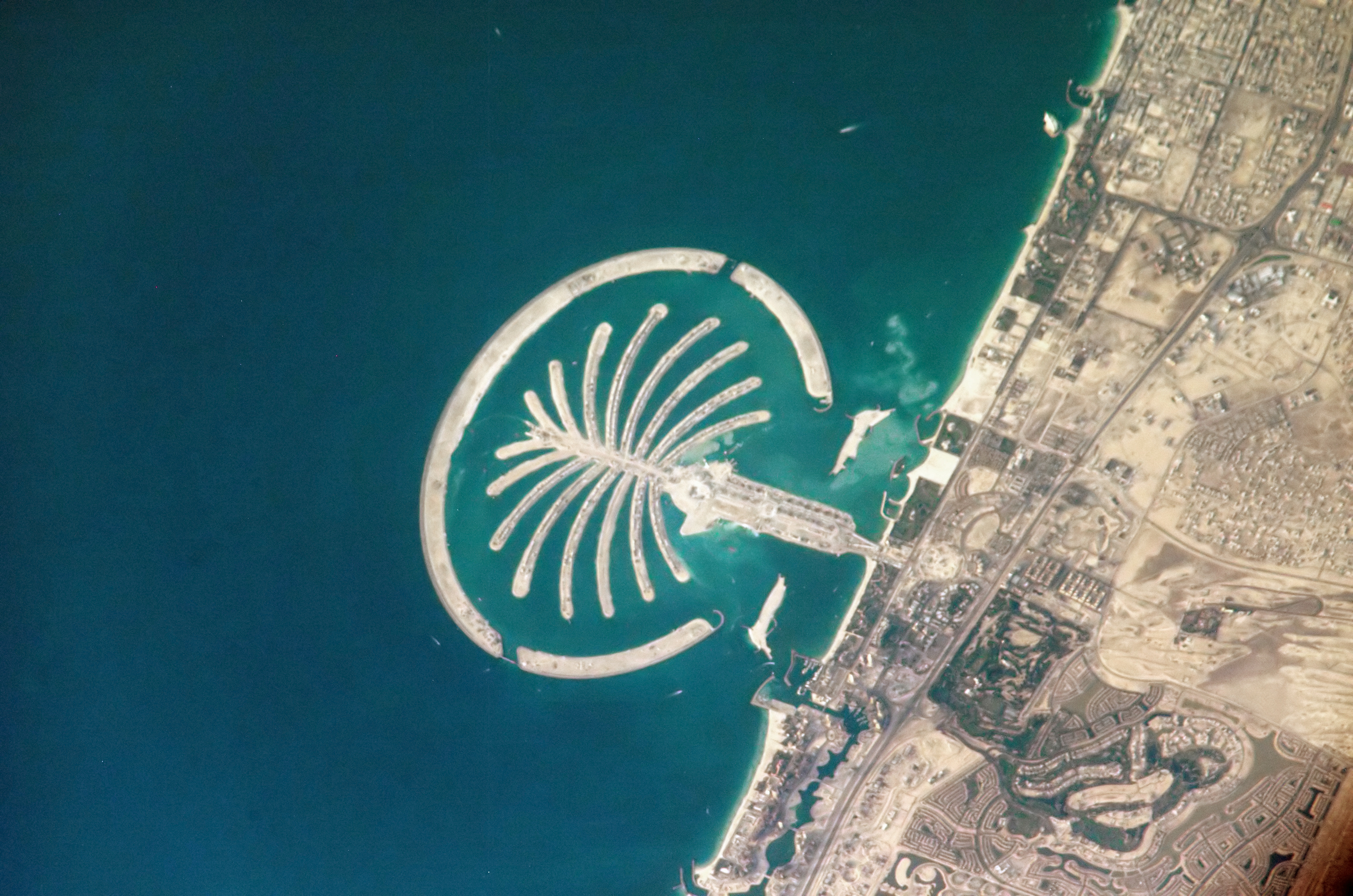

If Dubai, rising out of the desert sands that meet the Persian Gulf, is going to be more permanent than Burning Man, urban communication scholars may have an important role to play. The carefully engineered private enclaves of land, indoor ski slopes, massive malls, and transportation infrastructures are strikingly visible. Dubai is one of the fastest growing cities in the world because it is a hub where flows of economics, culture, and history converge. But where are the spaces of communication needed for a community to make sense of itself? Google's Sketchup and related forums on the Web are one place where this might happen.
Web 2.0 + Flickr + Burning Man = ?

If we should think, as James Carey emphasized, of communication as ritual, perhaps the one of the most selfconscious attempts to form community through ritual is Burning Man. In opposition to the passivity, emptiness, and inauthenticity of mass culture, creative individuals come together at an isolated place for a limited period of time. What happens when this rtitual is remediated through digital photography, collective blogging, and folksonomic tagging so that 66,490 and counting images of Burning Man are availble on Flickr? Is the authenticity of the community extended to an ever growing range of participants, or is it hollowed out into a meaningless spectacle, in Douglas Kellner's sense of the term?
Web 2.0 + Flickr + Geotagging = !

When a suite of basic capabilites are put together in an open context, things can scale very quickly and the emergent whole can be very greater the the sum of its parts. When the capability of easily organizing content spatially is added to a community the size of Flickr, new forms of communication practices are inevitable. 1.2 million geotags were added on day 1 of its availability. For years now, commercial web sites, community organizations, and arts movements have experimented with ways to label, organize, and the way individuals make sense of space. The greatly expanded depth and breadth of representing space will unleash new forms of community memory, personal expression, and uses no one can yet imagine.
Saturday, August 26, 2006
Thursday, August 24, 2006
Sleepy City
As the native of an industrial, rustbelt city on the decline since the rise of the deindustrialization of the 1970s, I always feel a twinge of nostalgia for Web sites with a mission like this one:
Sleepy City is photographically deconstructing the urban environment. Underground tunnels, derelict industrial sites and urban ruins are where I like to play. Discarded by society, these forgotten nooks and crannies wait quietly for the occasional urban explorer. Grab a torch and have a wander; you might be surprised how little of your city you have ever appreciated."
The Lost Year
Dan Baum has an excellent article about the reconstruction of New Orleans in a recent issue of the New Yorker. Two points of the article are interesting from an urban communnication perspective; first the architectural, cultural, and density factors that lead to the creation of an especially meaningful, tight knit community in the Lower Nine and second how "facts" like flood depth change meaning as the context shifts among scientists, developers, federal administrators, and residents of different communities.
Thursday, June 22, 2006
Blase Attitude
This pop culture take on Las Vegas, urban alienation, and the blase attitude is pretty smart. If only I could teach my classes this quickly.
Monday, June 05, 2006
The Big Dig House

A house made entirely out of left-overs from the Big Dig.
There is nothing particularly new or rare in making dwellings out of industrial waste. Discarded (and stolen) shipping containers section off living spaces in slums from Bombay to Cape Town. Cinder-block and corrugated-metal shanties form the bulk of the favelas perched on Rio de Janeiro's precarious hillsides.
There is, however, something novel about constructing a house with discarded castoffs that need to be moved by crane. "It's kind of like Junkyard Wars meets Habitat for Humanity."
Sunday, May 21, 2006
Everywhere Media
Blogging is everywhere. No need to retire to your home office or computer lab to post pics. This new application called Radar allows users to post and comment on pictures directly from their cell phones. The tag line is "Share what you do, while you do it, with the people who matter most." This is reflecting and networking in real time. Designed for urban users on the go, this kind of application suggests an intimate relationship between urban space and the process of mediating it.
Thursday, May 18, 2006
Is Boston an Ephemeral City?
Just when you think you know how Boston's urbanism should work, along comes a convincing argument that the city might just benefit from its ephemerality. From Joel Kotkin's book The City: A Global History, this article from the Boston Globe describes the precarious position of urbanism.
The danger, to Kotkin, is not only that vibrant cities like San Francisco will turn ephemeral, but that distressed cities will try in vain to follow the same path. Kotkin calls current efforts to jump-start Detroit and Cleveland through such a culture-centered strategy a fool's errand. Their comeback, he says, hinges on the much tougher, back-to-basics challenge of delivering good city services, including schools that will make them viable places to raise children for those who have other choices. ''There aren't enough yuppies to save Detroit," he said in a recent interview. But are there enough to save Boston?
Tuesday, May 16, 2006
Google Map Mania
Google Maps has made it possible to mash-up any set of data with a dynamic map. Google Map Mania is a blog that keeps track of this phenomenon as it grows. There are countless happy hackers out there that are taking great joy in making everything cartographically visible. You can find mash-ups of The Sopranos and Google Maps, The New York Times and Google Maps, Hot or Not and Google Maps. The list goes on. So, take about a dozen hours, sit back, relax and enjoy the new map-o-vision.
Monday, May 15, 2006
Urban Representations
Northwestern hosted an Urban Representations conference this past weekend. Really it was a collection of invited speakers but I figured I'd post a link so y'all can see that others are starting to think more seriously about urban communication.
Daniel
Daniel
CityTV
Sometimes surveillance can be fascinating. Picking up one of the more troubling aspects of urban living, cityTV questions who does the looking.
Inherent in the theology was the notion of eliminating the distance between the media-mouth and the community with which it was conversing. The camera wouldn't act merely as a spectator; instead it would be integrated into the actions and reactions it set out to cover. One variation of that is the use of other cameras to shoot the shooters. During the live CityPulse newscast, it isn't uncommon to have a Steadicam roam the room, tracking the movements of the studio cameras shooting the show. And among the one-person, eyes- ears-mouth-and-brain units known as VideoGraphers, a frequent accessory is a second Hi-8 camera provided to the story subject, so that he or she can record the recording. Citytv's assumption: Process could be at least as interesting as programming.
Subscribe to:
Posts (Atom)

